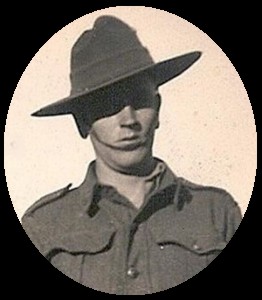|

NX10572
Sapper
Kenneth George Sydney Dwyer

Royal Australian Engineers
A.I.F. 2/6 Field Coy.
Japanese POW
Captured Singapore
Transported to work on the Thailand-Burma Railway
Died
Age: 28
19th August 1943
Whilst working on the Thailand-Burma Railway
The notorious Burma-Siam railway, built by Commonwealth, Dutch and American prisoners of war, was a Japanese project driven by the need for improved communications to support the large Japanese army in Burma. During its construction, approximately 13,000 prisoners of war died and were buried along the railway. An estimated 80,000 to 100,000 civilians also died in the course of the project, chiefly forced labour brought from Malaya and the Dutch East Indies, or conscripted in Siam (Thailand) and Burma (Myanmar). Two labour forces, one based in Siam and the other in Burma worked from opposite ends of the line towards the centre. The Japanese aimed at completing the railway in 14 months and work began in October 1942. The line, 424 kilometres long, was completed by December 1943. The graves of those who died during the construction and maintenance of the Burma-Siam railway (except for the Americans, whose remains were repatriated) were transferred from camp burial grounds and isolated sites along the railway into three cemeteries at Chungkai and Kanchanaburi in Thailand and Thanbyuzayat in Myanmar.
Taken from the Commonwealth War Graves Commission
Loved Ones
Son of William and Agnes Rachel Dwyer, of Uralla. New South Wales, Australia
Memorial
A4. D. 5.
THANBYUZAYAT WAR CEMETERY
Thanbyuzayat became a prisoner of war administration headquarters and base camp in September 1942 and in January 1943 a base hospital was organised for the sick. The camp was close to a railway marshalling yard and workshops, and heavy casualties were sustained among the prisoners during Allied bombing raids in March and June 1943. The camp was then evacuated and the prisoners, including the sick, were marched to camps further along the line where camp hospitals were set up. For some time, however, Thanbyuzayat continued to be used as a reception centre for the groups of prisoners arriving at frequent intervals to reinforce the parties working on the line up to the Burma-Siam border. Thanbyuzayat War Cemetery was created by the Army Graves Service who transferred to it all graves along the northern section of the railway, between Moulmein and Nieke. There are now 3,149 Commonwealth and 621 Dutch burials of the Second World war in the cemetery.
Taken from the Commonwealth War Graves Commission
|